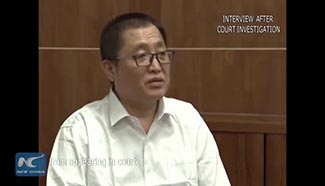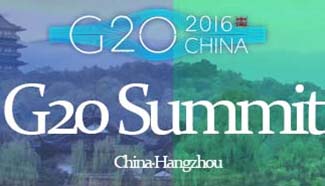CHONGQING, Aug. 4 (Xinhua) -- A highway corridor linking Chongqing Municipality and Southeast Asia, to be completed this year, is expected to drive trade between the southwest China city and the Association of Southeast Asian Nations (ASEAN).
The corridor consists of three routes. A route that opened in April runs from Chongqing through Guangxi Zhuang Autonomous Region to Hanoi, Vietnam. Another, stretching from Chongqing through the border crossing at Mohan, Yunnan to Vientiane, Laos, will open by September. A final route that goes from Chongqing to Yangon, Myanmar will also open this year.
Trucks travel 40 hours to complete the 1,400-kilometer trip from Chongqing to the Vietnamese capital, carrying mechanical equipment, building materials and auto parts to Southeast Asia, and bringing fruit, snacks and timber back to China.
More than 26 bus services have launched in the last two months, said Zhang Chunping, director of the management committee of the Chongqing Highway Logistics Base.
In the latter half of this year, two trucks will depart weekly from Chongqing, he added.
"The highway trade corridor has only started to take shape, but in three to five years, it will become a transportation artery and major trade route linking central China to ASEAN," said Li Muyuan, an expert with the China Communications and Transportation Association.
Chongqing authorities forecast that by 2020, regular truck services along the three routes will transport 20 billion yuan (about 3 billion U.S. dollars) of cargo a year.
In 2015, trade between China and ASEAN reached 472 billion yuan, registering an annual growth rate of 18.5 percent for the past five years.
"Most of the trade, however, was between ASEAN and coastal Chinese areas such as the Pearl River delta in the south and Yangtze River delta in the east. Vast areas in the central and western provincial-level regions need to join," said Yang.
The Chongqing trade corridor will siphon cargo from the neighboring provinces of Sichuan, Hubei and Shaanxi.
"Chongqing is opening up to all directions, through Europe-bound railways to the west, Yangtze waterways to the east and highway transportation to the south," said Li.
Compared to shipping services, which take more than 20 days, highway transportation is cheaper and more convenient. Statistics show more than 80 percent of Chongqing's trade cargo is transported via highways.
"The trade corridor will bring new opportunities for cooperation between ASEAN and inland Chinese regions," said Allan Yang, director of the Laos-China Association for Promotion of Economy and Trade.
Laos has signed contracts with Chongqing to support cooperation in logistics.
ASEAN can also capitalize on Chongqing's Yuxin'ou rail network to Europe to expand the region's trade, Yang added.
China and ASEAN will need to cooperate more in customs inspection, clearing and port building to support the development of highway corridors, said Li.










